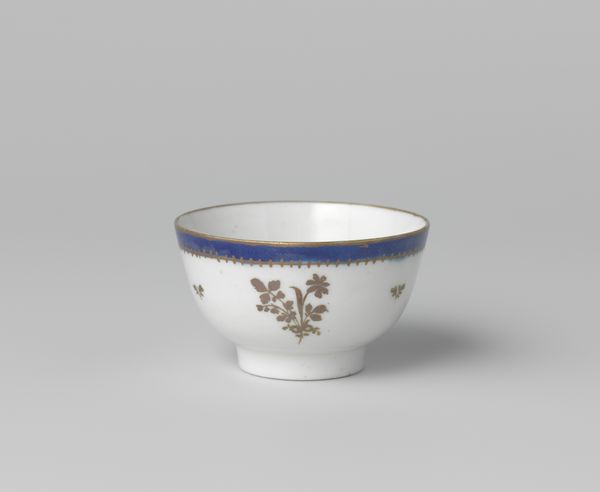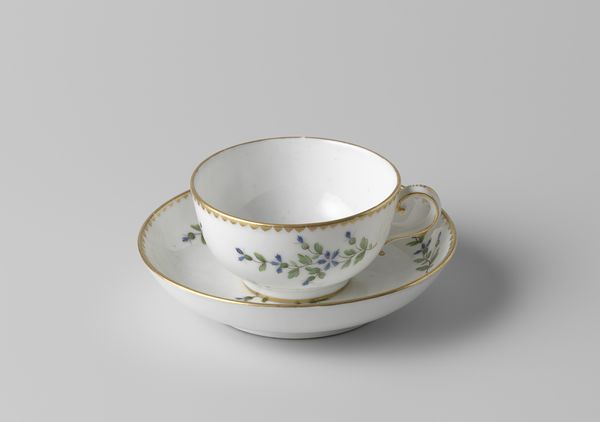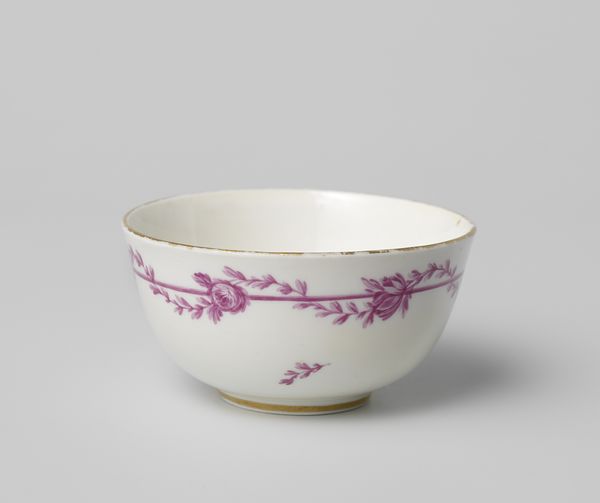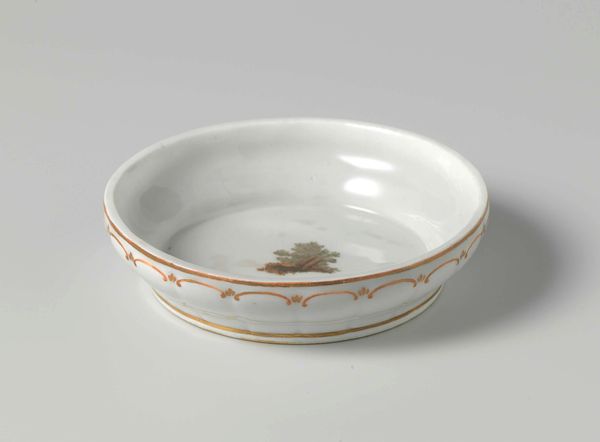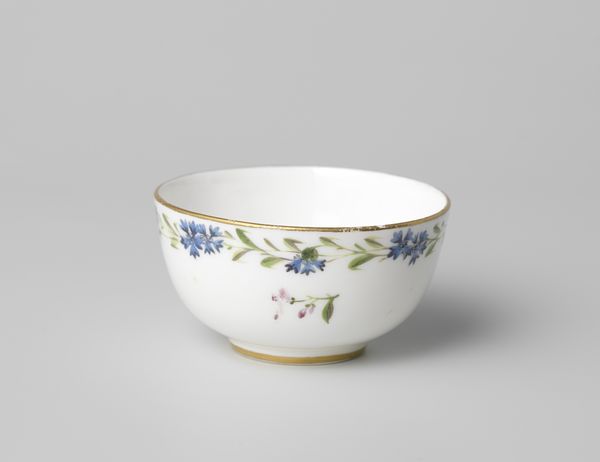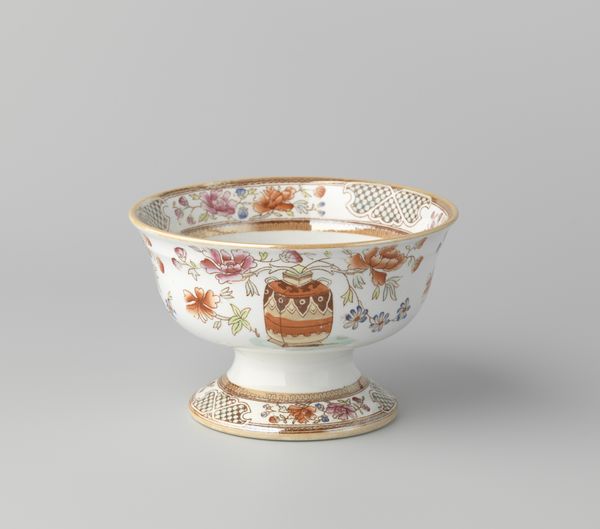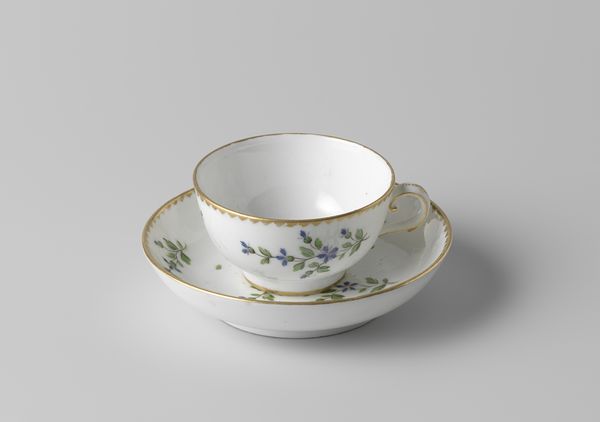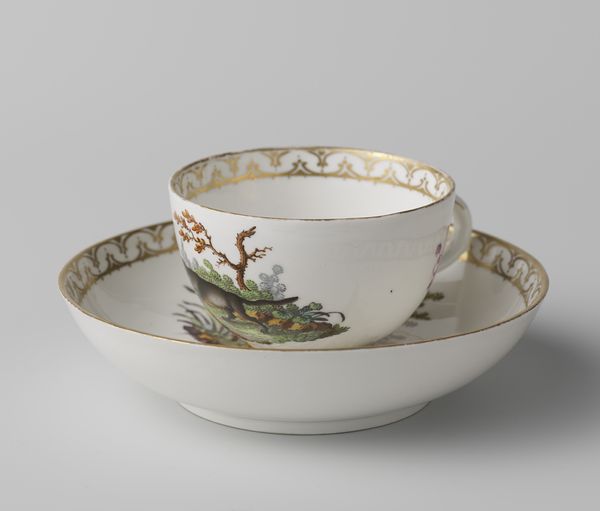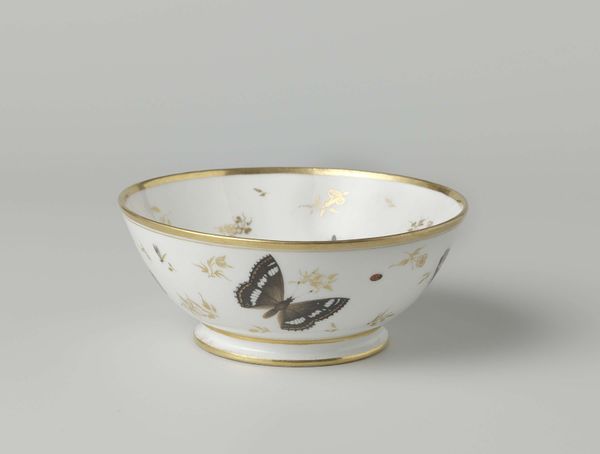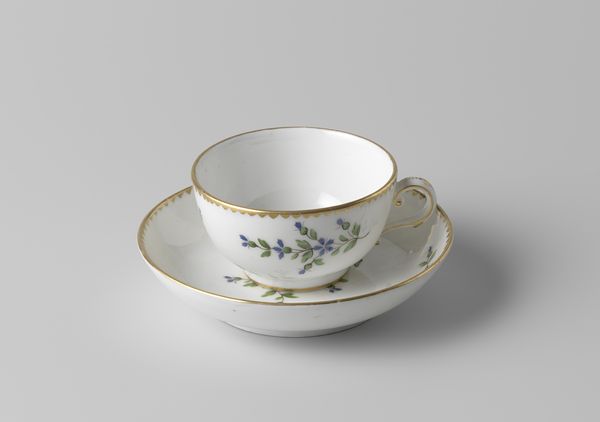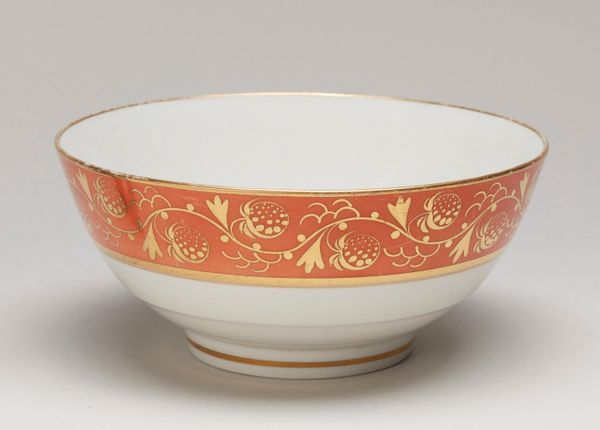
ceramic, porcelain
#
neoclacissism
#
ceramic
#
porcelain
#
decorative-art
Dimensions: height 10 cm, diameter 11.2 cm, diameter 21 cm
Copyright: Rijks Museum: Open Domain
Editor: So, here we have a “Spoelkom,” or a bowl, made of porcelain sometime between 1809 and 1814 by Koninklijke Porseleinfabriek Dommer & Co. It's currently at the Rijksmuseum. The simplicity is so striking! What catches your eye when you look at it? Curator: Funny you mention striking simplicity because what hits me is how deceptively complicated something this seemingly pure and simple could be! The devil is always in the details, darling. Notice the gilded leaf pattern around the rim – it whispers of neoclassical ideals, a yearning for ancient grace during a time of massive social upheaval. The French Revolution was still a fresh wound! What do you think that contrast speaks to? Editor: It's interesting you mention that. The chaos outside versus the perfect symmetry and stillness of the bowl itself... Almost like an escape? Curator: Precisely! These objects weren’t *just* bowls. They were declarations. They screamed "order" and "refinement" when the world felt like it was crumbling. Even the choice of porcelain is loaded. This wasn't just any material; porcelain was incredibly precious, a symbol of status and impeccable taste. Editor: So, even something as ordinary as a bowl was trying to say something pretty bold back then! Curator: Oh, absolutely! Every detail from the choice of ornamentation down to the firing temperature. These artisans, the Dommer & Co., they're crafting entire ideologies, entire worlds into these precious forms. Editor: That totally shifts my perspective. I thought it was just a pretty bowl. Curator: Well, isn't that the magic of art, to invite us to see beyond what we expect? Editor: It definitely is. I’ll never look at a bowl the same way again.
Comments
No comments
Be the first to comment and join the conversation on the ultimate creative platform.

